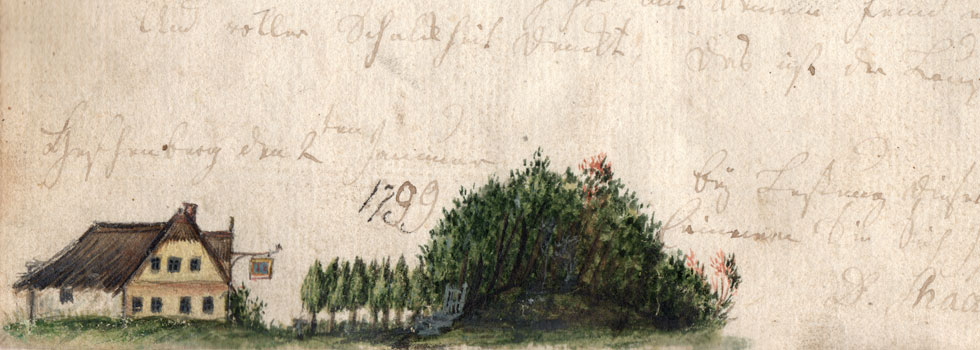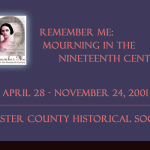These are screen shots from an exhibit at the Chester County Historical Society in 2001 called Remember Me: Mourning in the 19th Century. The objects on display included funeral attire, antique jewelry, portraits, painted miniatures, and memorial needlework.

Remember Me: Mourning in the Nineteenth Century April 28 – November 24, 2001 Chester County Historical Society

Mourning the the early 1800s reflected a close involvement with death. In rural areas such as Chester County, friends and neighbors helped to prepare and bury the deceased. They shared the grief and used funeral rituals and tokens of remembrance to reconfirm the relationships of the living. These tokens often included samplers and daguerreotypes. At a time in America’s history when epidemics such as cholera and yellow fever were common, one could assuage the fear of losing a loved one forever by having daguerreotypes taken and given to their families.

In the 1830s mourning began to focus inwardly within the family. Population explosions enlarged urban centers and work and home became separate spheres. In reaction, Romantics, who believed in a connection between God, nature, and humanity, viewed the home and natural settings as retreats from these social upheavals. Death was part of nature but its finality was disguised in sentimental expressions. Locks of hair were popular tokens of remembrance and elaborate hair wreaths were often on display in parlors of homes because the non-decaying nature of hair suggested permanence.

People, especially women, memorialized family in their homes and outwardly mourned with symbolic clothing, visually distancing themselves from the larger community. Although not everyone could afford to or chose to display their grief, the melancholy and spiritual belief in a benevolent god spread far into predominantly Protestant Chester County.

Funerals are a form of ceremonial and public mourning. In this region, communities mourned by participating in the process. They build coffins and prepared the bodies for burial. But by the mid-1800s the line between life and death became blurred by the desire to preserve the corpse with embalming and to create the image of permanent sleep. Coffins, elongated octagons, gave way to caskets, usually rectangular, and undertakers took over the tasks of family and friends. Funerals once held in the home slowly began to take place in funeral parlors as trends toward professionalism spreads from urban to rural areas.

Influenced by medical and scientific developments, Americans began to distance themselves from death and prolonged mourning in the late 1800s. Formal burial places reveal this trend. In the 1800s picturesque, sprawling cemeteries replaced compact graveyards. Rural-style cemeteries in the 1830s were developed to allow visitors to contemplate life in a natural refuge. But the growing desire to control nature, and life itself, led to lawn-park cemeteries of the late 1800s and memorial parks of the 1900s, each becoming increasingly uniform in appearance.



TrackBack URL
https://www.karenfurst.com/blog/remember-me-mourning-in-the-19th-century-chester-county-pa/trackback/